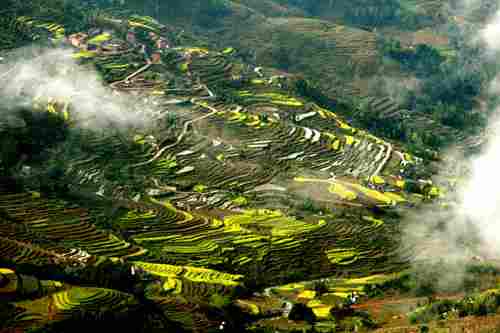China to open first immigration eco-museum
- By Zhang Ming'ai
 0 Comment(s)
0 Comment(s) Print
Print E-mail China.org.cn, March 31, 2012
E-mail China.org.cn, March 31, 2012
A reporter with Social Sciences in China learned from the Shaanxi Cultural Relics Bureau that China's first immigration eco-museum will open on March 31.
 |
|
Fengyan ancient terraces |
Zhao Rong, head of the Shaanxi Cultural Relics Bureau, said the Eco-museum is a entirely new concept. It provides three-dimensional, complete and ecological protection for tangible and intangible parts of natural and human environments.
The Fengyan ancient terraces were built during the Qing Dynasty by an immigrant Wu family from Changsha, Hunan. The terraces have over 250 years of history, reflecting the historical contributions Hunan immigrants made to the development of Shaanxi.
The Fengyan ancient terraces are the largest intact Qing Dynasty terraces, covering an area of more than 12,000 mu (800 hectares). They were discovered in northwest China during the 3rd National Relic Census.
Locals say that the ancient terraces offer insights into what life must have been like during the Qing Dynasty.
"In one month the rapeseed flowers will be bloom all over the mountains," said a farmer working in the field. "The scenery will be beautiful."
"This year's Rapeseed Flower Festival will focus on the ancient terraces. We are working to build an assembly hall, parking lots and three viewing platforms to allow visitors to enjoy the scenic panoramas," Xuanwo Town's deputy chief said. Since the ancient terraces were discovered during the relic census, the "heavenly place" hidden deep within the mountains has gradually faded from people's sights, the deputy town chief continued.
China's terraces, which emerged from the Qin Dynasty and Han Dynasty and bloomed during the Song Dynasty, are great feats of human and nature, and a miracle in the history of farming.






Go to Forum >>0 Comment(s)